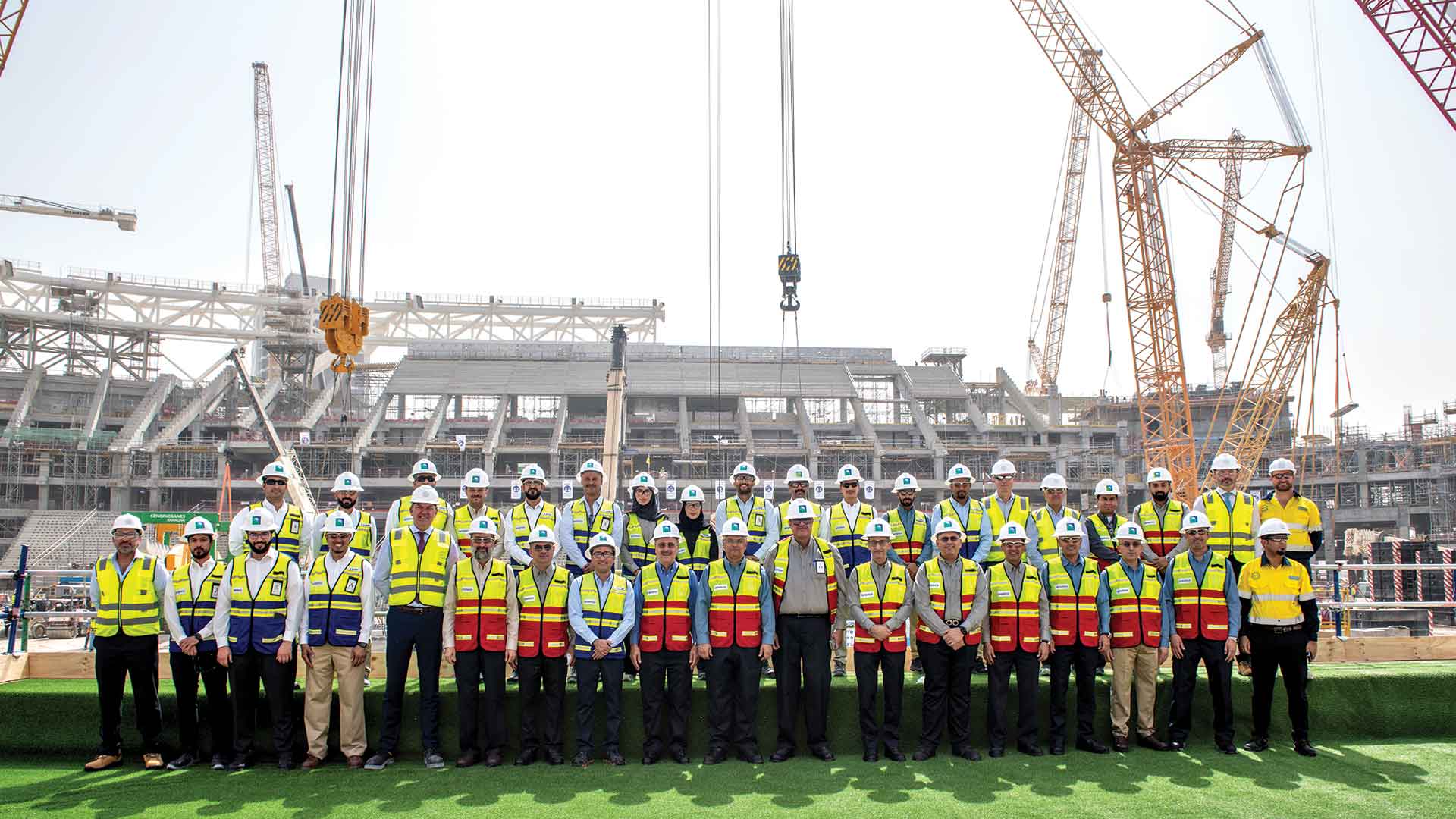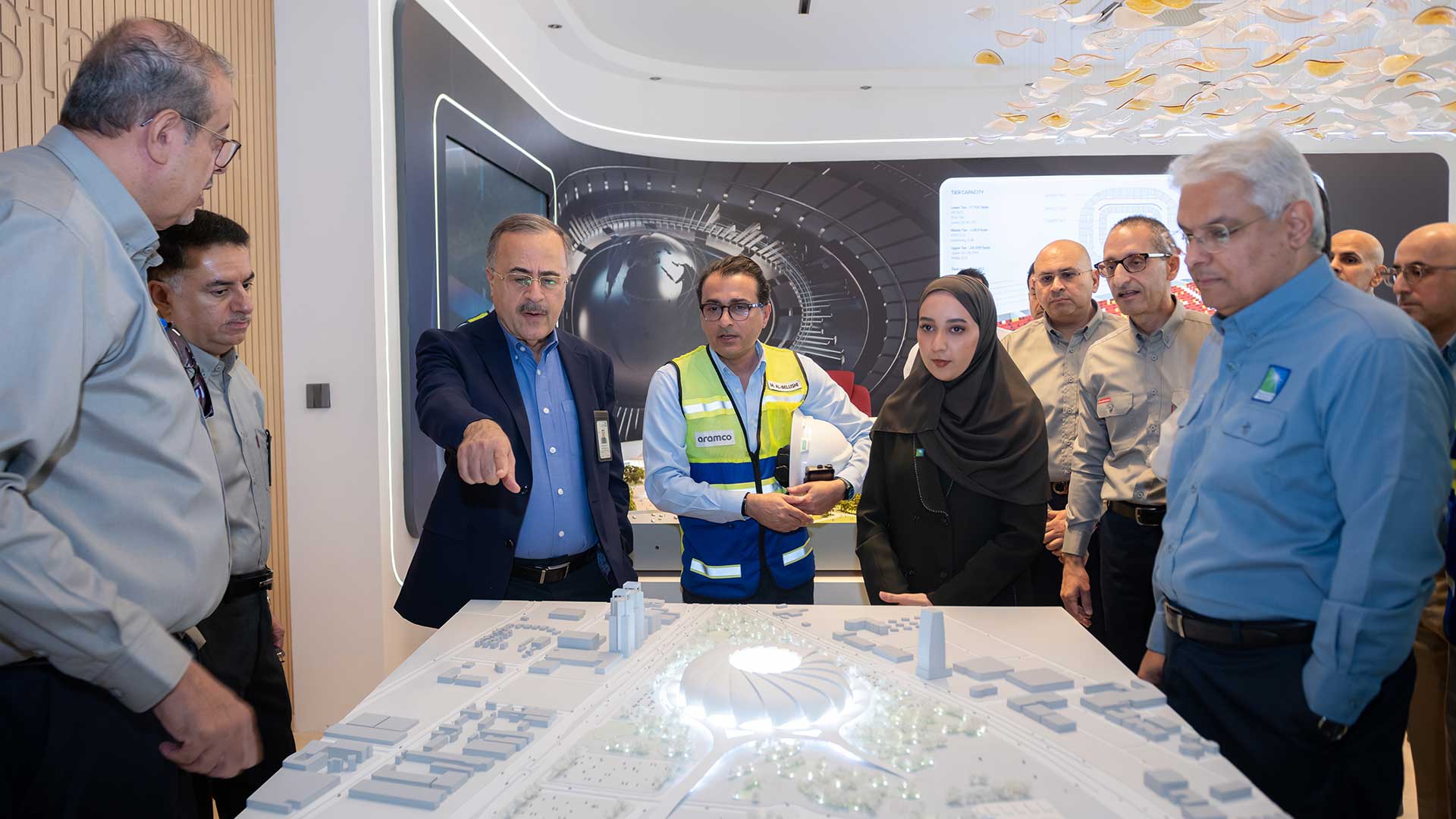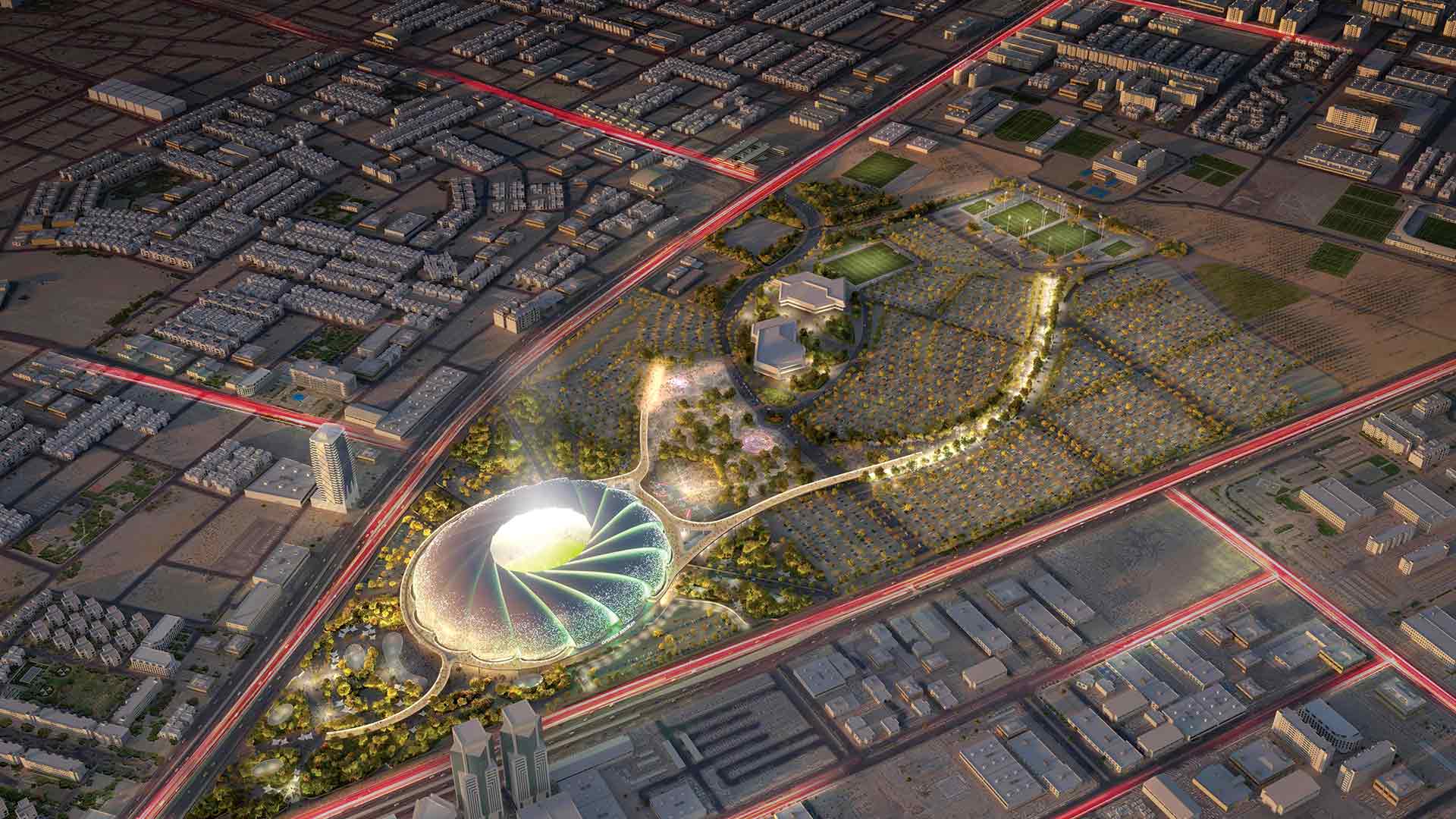Aramco Stadium
Amin Nasser leads Executive Management Safety Review tour of Aramco Stadium
President and CEO sees progress on company’s efforts in building a top-level stadium in al-Khobar.
Jul 9, 2025

Company executives visited the Aramco Stadium project site as part of the Executive Management Safety Review (EMSR) this week. They witnessed the project’s progress, as well as the various construction safety measures that have been put in place to safeguard against safety incidents and to ensure the health and well-being of the workforce throughout the stadium’s construction.
Amin Nasser, Aramco president and CEO, led the executive delegation, which included Wail A. Al Jaafari, executive vice president of Technical Services, and Nabeel A. Al-Jama’, executive vice president of HR and Corporate Services, among others.
Wide variety of features
The Aramco Stadium is being built in preparation for the 2027 AFC Asian Cup and the 2034 FIFA World Cup, and will be capable of hosting more than 47,000 fans for a wide range of events, including sports matches, concerts, and cultural festivals. It includes a number of features aimed at comfort and safety, such as:
- A 22,300 refrigeration-ton (RT) air-conditioning system capable of keeping both fans and players cool and comfortable, even in the summer heat.
- 8,883 parking spaces available for general admission and VIP guests.
- 1,695 fixed CCTV cameras to provide continuous visibility of every aspect of the stadium, from the movement of cranes to the lifting of heavy equipment, as well as even the individual safety behaviors of the more than 8,000-strong construction workforce.
- 30,000 fire sprinklers, detectors, and notification devices.
- Commercial and open public spaces, including retails stores and family parks.
- Concremote (Concrete Monitoring System), which uses sensors to measure the temperature and calculates the compressive strength of the concrete structure. This technology enables construction processes to move forward safely and boosts productivity.
After a brief overview of the project at the stadium’s visitor’s center, the executives visited the Safety Command Center, which utilizes AI-enhanced CCTV cameras to ensure safe operations at the site. With its 360-degree rotational view and zooming capability, this surveillance system deploys the latest AI technologies to identify violations such as any failure to wear safety helmets, or smoking in restricted areas.
Other new technologies that improve the safety of the workforce include a new wireless audible emergency system (WES) that signals an evacuation in the event of an emergency. This is fully integrated with the Safety Command Center, which is also equipped with a crane collision system that can monitor the movement of 16 cranes and prevents any potential clashes through strict controls on crane movement.
Safety and wellness measures
Inside the 45,520 square-meter stadium site, the project team highlighted safety measures aimed at ensuring workplace safety throughout the construction process and beyond. Some 150 certified safety officers monitor the safety practices of all aspects of the work, and more than 520 safety induction sessions have been carried out to ensure everyone understands the unwavering safety standards required by Aramco.
In addition, to alleviate the challenges of heat stress, adapted work schedules are being used over the summer period and hydration and recovery stations, including 19 cold rooms and 79 water stations, have been installed across the site.
A critical component for the well-being of the workforce is a Welfare Center. This includes five fully air-conditioned tents, each with a total capacity of 700 people, which are being used as a break area for breakfast, lunch, and dinner, in addition to a sixth tent that is used as a prayer room.
A Safety Training Center has also been established at the site that includes space for safety inductions, practical and theoretical safety training, and medical facilities.
Sustainability efforts
The Aramco Stadium has also been designed with a range of lower-carbon solutions aimed at managing its environmental impact. Nearly 93% of all concrete, wood, and other materials used to date have been recycled.
The use of more sustainable concrete is estimated to reduce the emission of carbon dioxide by 25%, while the utilization of CO2 block pavers aims to eliminate the equivalent of the yearly emissions of 85 automobiles. In addition, the stadium utilizes energy-efficient lighting and cooling systems, as well as rainwater harvesting and gray-water reuse systems.

